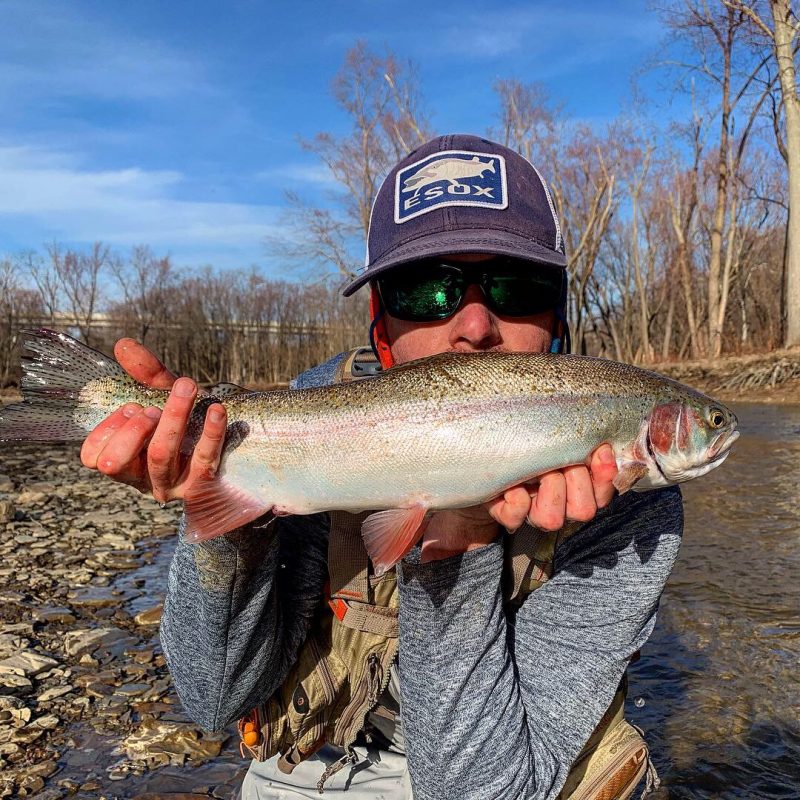By: Dave Bergman
Guide for FlyFishAdventure
So you have been fly fishing now for a year or two and you have traveled the road on the quest for bigger fish and robust numbers. You left the world of using dry flies exclusively and branched out to sinking nymphs. You even threw those large streamers and felt the thrill of a fish eating on the strip. Now you have a menagerie of flies in your box or boxes to conquer your local stream. You know every spot, you have fished this stream to what feels like over 500 times, but for some reason you still don’t pull consistent numbers and you feel as though something is still missing. You use all the streamers and nymphs your local fly shop recommends, and you know what a good run looks like. Maybe there just aren’t as many fish in those spots as you thought there were or they just “aren’t biting” or have that “lock jaw” as some of the old timers will say. Well I have news for you; that most likely isn’t the problem. You may need to get your lead on!
I’ve seen it time and time again. A diligent nymph angler comes into the store looking for advice. “man, I cant seem to figure these fish out” they state. Of course I’m happy to help and I start recommending nymphs. As soon as I pick up the first fly they stop me in my tracks and say “I’m using those” once I hear that I ask, “are you putting any split shots on your line to get it down there?” and the answer 80% of the time is no, and the other 20% of the time its “well I use nymphs with bead heads so I don’t need them.”
Yes, bead heads tied into your nymphs can help aid in getting the fly into the feeding column, but usually its not enough. You see, it goes a little something like this. The run you’re fishing has a brisk current, you chuck in your indicator nymph rig with a size 16 bead head pheasant tail nymph and nothing else thinking that bead head is going to get it down just inches from the bottom. It might reach the bottom, but it will reach the bottom about 20 feet further down stream from where the fish are feeding. That little size 16 nymph is as light as a feather even with the bead head, that water is moving at a force strong enough to move tree branches, so it will move your tiny nymph effortlessly where the water is strongest, near the surface.
As we may or may not know, when trout feed on nymphs they travel into the top of the run and post down near the bottom of the stream where the current is less vigorous. These fish see an absolute buffet of nymphs floating rite by there face and do not have to move far to snatch them up. That being said, a trout will not usually make the effort to get your little bead head nymph traveling fast closer to the surface. Now don’t get me wrong, trout will come up for your middle or surface column nymph or streamer every now and again when they are feeling tenacious enough. That is why you still catch some fish, but you want to maximize your numbers, right?
Well the answer is putting weights above your nymph or streamer to get it down near the bottom as soon as your cast hits the top of the run. When you do this, you now have the advantage of putting your fly in front of the face of every fish in that run. You now have the confidence to know every fish is seeing your offerings and has to make little to no effort to receive it. Now sometimes the fish really just don’t seem interested, then its time to change flies. Typically I find that it is not the fly you’re using (especially on stocked streams), but the presentation usually gets the job done. So never change your nymph or streamer until you have tried weighting them down. Before you change your fly put another weight on first. Then if that doesn’t work tie on something new and tantalizing. You are going to get hung up on rocks, and you are going to loose a fly or two, but those are a small sacrifice you make to get into some serious fish!
Now what split shots should you get? I find two great sizes to always have on you are BB, and AAA. Normally two or three BB’s gets the job done. If you are like me, I use AAA or sometimes two, but they can get heavy. Split shots come in a plethora of shapes, sizes and materials. If you are not into using lead for environmental reasons, tin is always a fine option as well.
If you want to learn on the river, come with me on a guided trip. I always believe that when you pay for a guide you are not just paying to catch fish, you are also paying for information and a learning experience. My trips are very affordable and I feel that you will gain the most by having a hands-on experience. Check us out at FlyFishAdventure.com. Give me a call or shoot me an email to set up a trip so we can GET OUR LEAD ON!

